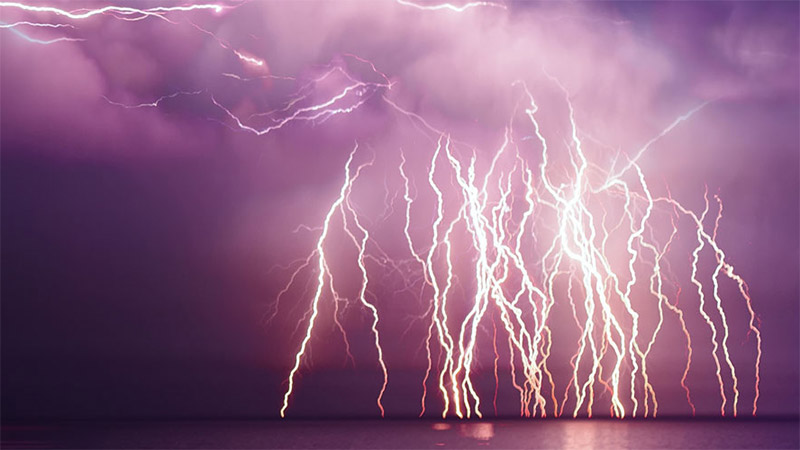How does Vaisala detect lightning?
How can Vaisala detect lightning around the world? How can sensors at a small number of locations detect lightning so far away? Angles and times are part of the answer, as are remarkable insights into lightning behavior, ingenuity, software, and hardware.
First, the angle from the antenna to the lightning event is measured to less than a degree in direction. Second, GPS timing tells when lightning occurs to the microsecond. Two or more antennas will locate lightning over the U.S. in National Lightning Detection Network NLDN since there are two angles and two times from sensors that are always within a few hundred kilometers. In the Global Lightning Dataset GLD360 network, three or more sensors are needed since lightning is being detected out to thousands of kilometers away.
The detection efficiency of a network measures what percentage of the actual lightning is detected. The Vaisala networks excel at detection efficiency. The GLD360 network detects over two billion lightning events per year since many land areas have over 70% cloud-to-ground flash detection efficiency, the best performance of any global lightning network.

Across the contiguous United States, more than 95% of all cloud-to-ground flashes are detected by NLDN, as are more than 70% of the cloud-to-ground strokes that make up the flashes. Lightning strokes are why lightning appears to flicker. In addition to the cloud-to-ground lightning, in-cloud lightning makes up most of the lightning in a thunderstorm. NLDN detects around 50% of the in-cloud events. Additionally, the median location accuracy of NLDN is better than 150 meters, which is the best network accuracy across the contiguous United States.

We hope this week of blogs from Vaisala has shown where and how much lightning is happening around the world. In addition, it is important to recognize that any cloud-to-ground lightning event is potentially deadly and capable of causing damage. Detecting in-cloud lightning is as important as cloud-to-ground lightning in terms or providing information for warnings and alerts to the dangers of lightning.
Be sure to follow Vaisala blogs during this week on uses of lightning data for human safety. Also, please visit the National Weather Service and National Lightning Safety Council websites this week and in the future.




Add new comment